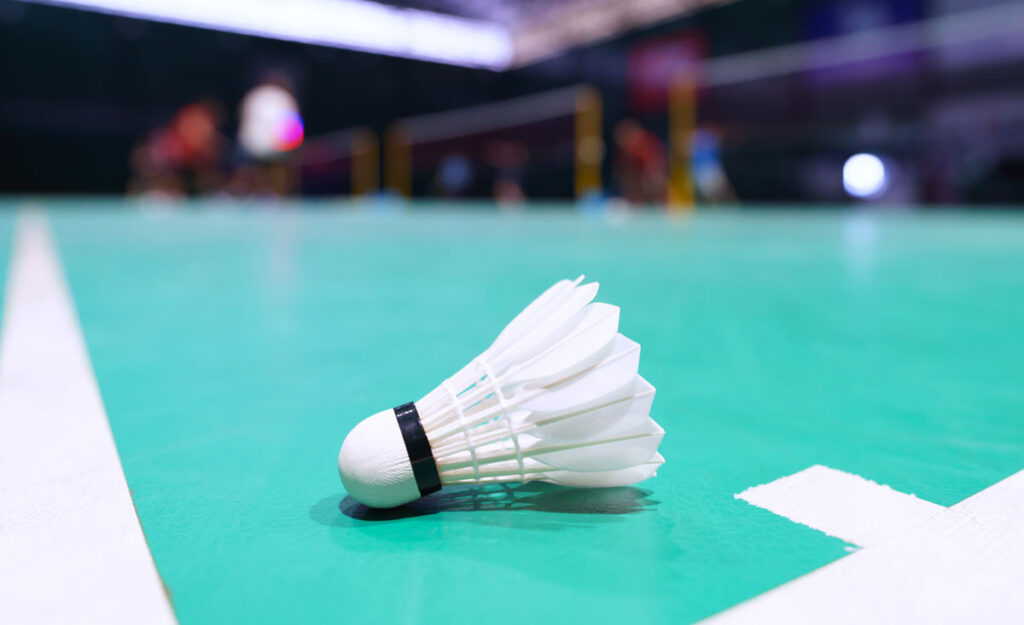Feather and plastic shuttlecocks are two of the most common types used in badminton. While they both serve the same purpose, there are some differences between the two. Feather shuttlecocks are made from goose feathers and are considered more traditional. They are more expensive than plastic shuttlecocks but are known for their superior flight and accuracy. Feather shuttlecocks are also more fragile and can easily be damaged if not handled properly. Plastic shuttlecocks, on the other hand, are made from synthetic materials and are more durable than feather shuttlecocks. They are also less expensive, making them a popular choice for beginners and casual players. However, plastic shuttlecocks do not offer the same level of flight and accuracy as feather shuttlecocks.
Ultimately, the choice between feather and plastic shuttlecocks depends on the player’s skill level, budget, and personal preference. Some players prefer the traditional feel of feather shuttlecocks, while others prefer the durability and affordability of plastic shuttlecocks. Both however are easily transferable and can fit in most badminton backpacks.
Below we have put together our guide on feather shuttlecock vs plastic shuttlecock.

Who uses which type of shuttlecock
Plastic shuttlecocks are a good idea for most beginner players and in some cases more advanced players as well. They are cheaper to purchase and more durable – beginner players will often mishit a shuttle which can cause feathered shuttlecocks to break, whereas plastic shuttlecocks will not. This leads to another benefit of plastic shuttles, they are more forgiving, by being more durable, they offer a more stable flight, helping improve your game as a new player.
Most of the time, advanced players – especially competitive players – will opt for feathered shuttlecocks as these are used in competitions. You’ll find the flight of a feathered shuttlecock vs plastic shuttlecock to be more consistent when compared and more natural. Often feathered shuttlecocks are easier to manipulate which can help when playing around the net.
Is there a cost difference?
When playing badminton, you’ll find plastic shuttlecocks to be a lot cheaper than buying feather shuttlecocks. Feathered shuttlecocks require more maintenance and can break within a single shot – if you catch the shuttle in the wrong way. The type of badminton player you are and how experienced in the sport will also affect how long a feathered shuttle will last – aggressive players with go through more than passive players. If you want to test yourself out with feathered shuttle cocks, start with the entry-level ones, as these are cheaper. A standard pack of Yonex plastic shuttlecocks is priced at around £9.99, whereas, a standard pack of Yonex feathered shuttles is priced at £20.99. You may find there is a deal if purchased with another piece of badminton equipment, such as a badminton bag.
Is a feathered shuttlecock superior to a plastic shuttlecock?
A simple answer would be no! It’s easy to fall into the trap that as they use feathered shuttles for competitions, you should be using them yourself when this isn’t the case. We’ve touched on it above, different types of shuttlecocks service different purposes. As a beginner learning the sport of badminton, you will perform just as well using a plastic shuttlecock as you would a feathered shuttlecock – if not potentially better with a plastic one. They are cheaper to purchase, helping introduce you to the sport. As you develop and become a better player, this is when a feathered shuttlecock should come into play. More advanced players will benefit as feathered shuttles will help them home in their technique and allow them to improve areas of their game, such as their net play as feathered shuttles are more precise. Plus, if you are entering competitions, you’ll benefit from playing with the type of shuttles they play with.
What shuttlecocks are used most in competitions
There are several popular brands that produce feathered shuttlecocks at the competition level – Yonex, Ashaway, Babolat and Dunlop. The company you will come across the most is the Yonex Aerosensa series. These series of feathered shuttlecocks (Yonex Aerosensa 50 (AS-50), Yonex Aerosensa 40 (AS-40) and Yonex Aerosensa 30 (AS-30)) feature in many major badminton tournaments, the Olympics being one of the most known.
Feather shuttlecock vs plastic shuttlecock: flight speed
When it comes to a feathered shuttlecock vs plastic shuttlecock, a key area to look at is the flight speed. Flight speed is important as this will affect where the shuttle lands on the court, how easy it is to return and how much force you will need to apply when striking the shuttle. Shuttlecocks are often scored between 75 (the slowest) to 79 (the fastest), in the UK we often play with a speed of 78 which is relatively fast.
When playing with a feathered shuttlecock, they have a greater initial speed on strike with a faster deceleration when compared to a plastic shuttlecock – this is to do with how feathered shuttles are built. Often you will find a plastic shuttlecock to have a flatter and faster trajectory
Our Summary on a feather shuttlecock vs plastic shuttlecock
There really is no right or wrong answer when buying feather vs plastic shuttlecocks. Feathered have many benefits and are used for competitions and more seasoned players. Plastic shuttlecocks tend to be used by beginners as they are more forgiving and cost-effective. However, both allow you to enjoy playing badminton.
What type of shuttlecock do you like playing with? What benefits would you recommend that we haven’t included in the above article on feather shuttlecock vs plastic shuttlecock? Let us know in the comment box below.

